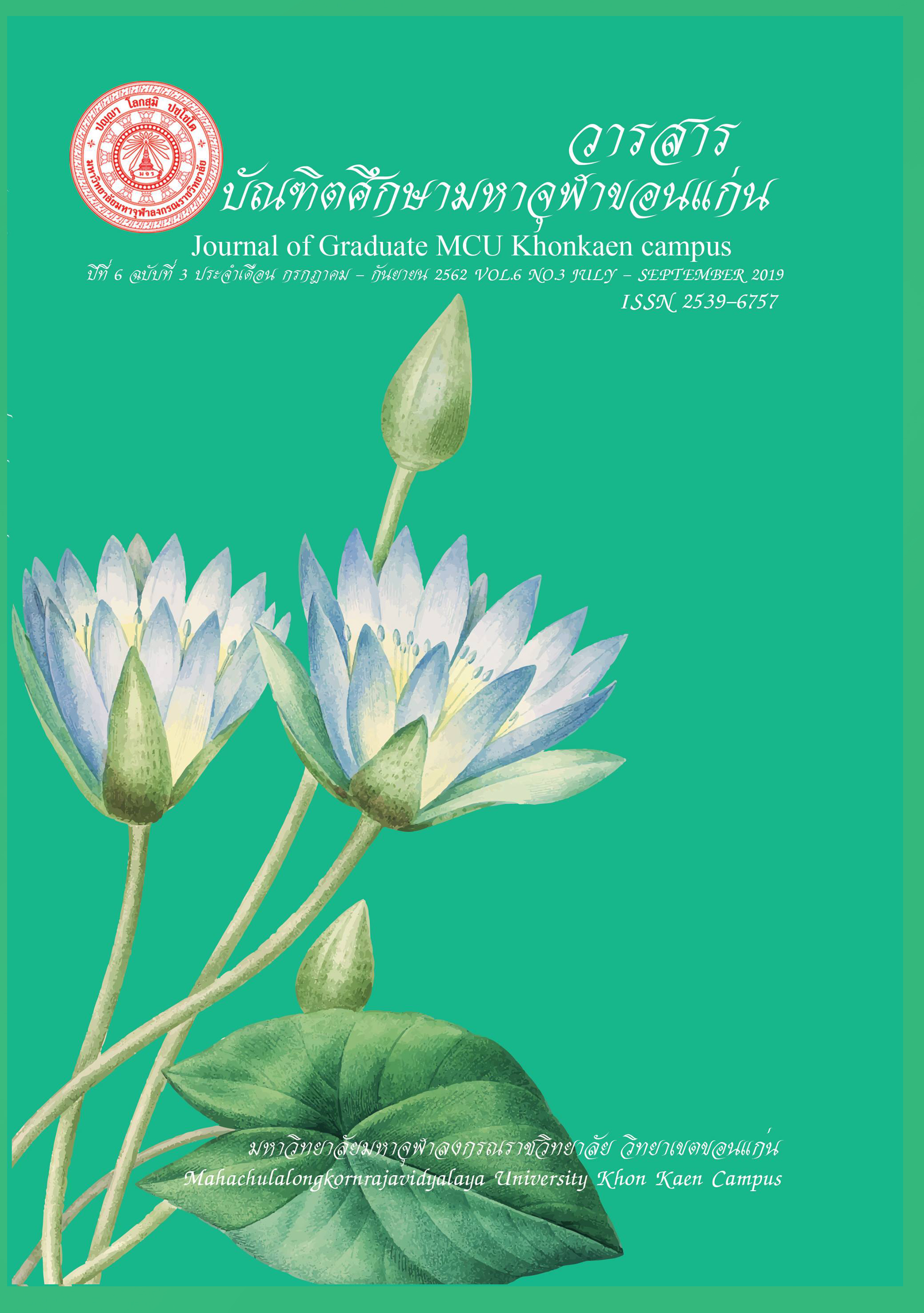THE DEVELOPMENT OF RISK MANAGEMENT BASED ON BUDDHIST PRINCIPLES IN EDUCATIONAL INSTITUTES UNDER THE OFFICE OF THE PRIMARY EDUCATIONAL SERVICE AREA
Main Article Content
Abstract
Research on this subject With the objectives 1) to study the current conditions and the risk management problems of the schools under Office of Primary Education Area 2) to develop risk management according to Buddhist education administration of educational institutions under the Office of Primary Educational Service Area 3) to propose guidelines for risk management in accordance with Buddhist education administration principles of educational institutions Under the Office of Primary Education Area Is an integrated research method Namely qualitative research that uses document studies With a document study form to create semi-structured interview tools In-depth interviews 5 key informants to draft as a preliminary risk management guideline Before presenting to the group discussion By 9 experts / person to develop guidelines for risk management according to Buddhist administration And lead to quantitative research To examine the guidelines for risk management in accordance with Buddhist administration principles By creating a questionnaire And applying the Buddhist principles "Ariyasat4" to apply in the risk management approach according to Buddhist education administration principles of educational institutions Under the Office of Primary Education Area In order to inquire the school administrators for 379 people. The results were analyzed using quantitative data. According to statistical analysis principles
The research found that
- Research on current conditions and risk management problems of educational institutions Under the Office of Primary Education Area The important issues that need to be accelerated, which cover all risk factors in schools, are the risk factors in 5 schools, namely 1) teaching and learning 2) finance 3) educational confidence 4) environment 5) Safety And there are elements of risk management of schools, 8 elements, including 1) internal environment, 2) objective setting, 3) event identification, 4) risk assessment, 5) risk response 6) Control activities 7)Information and communication 8) Monitoring and evaluation
- The results of the development of risk management guidelines according to Buddhist administration principles Of educational institutions under the Office of Primary Education Area, found that educational institutions need to have various risk prevention measures That will happen in educational institutions There is a risk management committee set up to manage the risks that may occur in educational institutions. Must have a risk management policy And risk management processes Including activities in various operations
- Propose guidelines for risk management in accordance with Buddhist education administration principles of educational institutions. Under the Office of Primary Education Area Consisting of risk management policies Risk Management Process Objectives Determination of roles and responsibilities of the Risk Management Committee Which consists of administrators and teacher personnel who are members of the Risk Management Committee Work in the form of a board There are activities of risk management. Adopt the "Ariyasut4" principle to apply for risk management. By doing in the form of a risk management process, 4 steps: 1) searching for risk (suffering) 2) analysis (accumulation) 3) risk assessment (nirot) and 4) risk management (Mak)
Article Details
References
(Bangkok, 2003), 10.
Internal Audit Group, Ministry of Education, Risk Management Manual, Office
Permanent Secretary, Ministry of Education, September 2013, 1)
Krejcie& Morgan, 1970, cited in SutheeSrisai,2008, page 132 -133.
ChaisetPhromsri, Risk Management (Bangkok: Extranet, 2007), Page 14.
NarumonSaadchom, Enterprise Risk Management,(Bangkok: Base Books, 2007), Page 25.
_________.Phayao University, Risk Management Guide, Phayao University, 2011, Page 30.
PhraPhromKunaporn (P.Payutto), Buddhist Dictionary Dharma edition, 2016, page 112-
113.
Information System for Educational Administration Information Group Bureau of Policy and
PlanningBasic Office of the Basic Education Commission (2016).
WiriyaRattanasuwan. Reduce losses with risk management. Productivity World Journal
Thammasat University 35,7 (2001): 75.
SanguanChangChat, Project Risk Management, Faculty of Management Science
PibulsongkramRajabhat University, 2004 [Online], Source: http:
//www,netcomuk.co.uk, [9 Jun 61], 13.
Office of the Teacher Civil Service Commission and Educational Personnel, Teacher and
Personnel RegulationsEducational Government Gazette, Volume 127, Episode
45 A, BhumibolAdulyadej, given on the 22ndJuly 2010, Krung PhetMahanakorn:
MR, 2010), Page 7-8.
UsanaPhatamontri, Modern Internal Audit Concepts and case studies, 2007, Page 4 -5.Wilson.J, & Tingle J., quoted in RakitSuttipong, "The effect of using the risk management
process onEfficacy and drug use behavior as perceived by professional nurses,
Chonburi Hospital ",2014, Page 70.
Thesis
DuangjaiChuaytrakul, "Risk Management in Basic Education Level Schools", Philosophy
ThesisDoctor of Philosophy (Educational Administration), (Graduate School:
Silpakorn University, 2008), 136.
Foreign Research
Pullen, D. Risk Management Guide: A Good Practice Guide to Risk Management within the
Further Education Sector, Institute of Risk Management, (London, 2011), pp:3-6.

